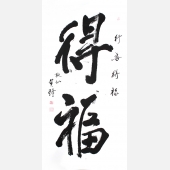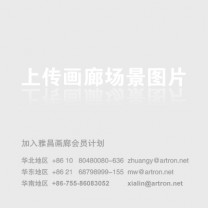Hong Kong's Contemporary Art Fair
2011-04-15 11:43:42
Beijing may be the most culturally vibrant city in China but the star of southern China is rising with the cluster of Hong Kong, Guangzhou and Shenzhen. The Guangzhou Triennial is widely considered China’s most significant art event; Unesco has recently designated Shenzhen, China’s wealthiest city, as one of the world’s 16 “Creative Cities”; and Hong Kong has raised its cultural game with various high-profile festivals and initiatives.
Last year, the Hong Kong government approved a HK$21.6bn (US$2.7bn) budget to develop 40 hectares of wasteland at West Kowloon as a cultural district, including a museum, exhibition space and performing arts venues. If the powers that be get it right, the project has the potential to place Hong Kong firmly on the global art map.
It is already a major international art market – Sotheby’s began staging Asian art sales there in 1973 and Christie’s followed in 1986. Although a flourishing art trade subsequently evolved in Beijing and Shanghai, the fact that Hong Kong retained its status as a free port, levying no duty on the import or export of works of art, has assured it of the lion’s share of the Chinese market – 45 per cent. Crucially, that market has grown to become the world’s third largest, with annual sales estimated in 2007 at $3.8bn. Between 2003 and 2007, the turnover in the contemporary market increased more than 200 times.
Another significant development of last year was the staging of the first truly international modern and contemporary art fair in Hong Kong, ART HK 08. This unexpectedly polished affair attracted some 20,000 visitors and grossed $20m in sales. Most importantly, it has proved a catalyst for a critical mass of auctions, gallery shows and debate that has sprung up around this year’s event. Six of the region’s auction-houses – from Japan, Singapore, Seoul and Taipei – are staging sales to coincide with the fair, some in Hong Kong for the first time. Seoul Auction’s $10m sale on May 15 offers anything from work by the esteemed Chinese master Sanyu to a Kusama “Venus” and Damien Hirst butterflies. It seems that the art trade in Asia as well as the west is looking to develop Hong Kong’s potential as a powerful regional art market hub.
Certainly this year there is a stronger international line-up of galleries – and artists. Notable newcomers among the 115 dealers from 24 countries are Tokyo’s two top contemporary art dealers, Tomio Koyama and SCAI The Bathhouse, London’s influential Lisson Gallery and White Cube, and international mega-dealer Gagosian. According to Gagosian’s Nick Simunovic, the gallery is also committed to opening a gallery in Hong Kong when it can find “the right kind of space at the right kind of location at the right price”. Another exhibitor, Ben Brown Fine Arts from London, is scheduled to open a space here in the autumn.
While last year’s fair seemed very much a Hong Kong rather than a Chinese event, this year that emphasis is set to change. “We wanted to raise awareness of the fair on the mainland and target that market,” explains director Magnus Renfrew. “We have done this through media partnerships and working with private collectors and institutions.” More mainland galleries are also taking a bow, including international players such as Galleria Continua, Galerie Urs Meile, Boers-Li Gallery and ShanghART.
It is not so much the still relatively few contemporary art collectors that are drawing dealers from east and west but the latent potential in the whole region’s still growing wealth. The Asia-Pacific region is home to around 20 per cent of the world’s high net worth individuals, and the numbers of its middle class are rising fast. This middle income group is expected to include at least 600m people in China alone by 2020. It has already brought a striking increase in demand for cultural experiences and art and design objects.
The government has expressed its desire to encourage this cultural economy and stimulate creativity, not least to further its stated ambition to turn itself into an innovation-orientated country by 2020. Made in China is to be supplanted by Created in China. According to Magnus Renfrew: “Asia will be playing a much more important role in all our lives. The art trade has recognised this and is taking a long-term view, but developing a strong contemporary art market here will take time and education.”
Education is one of the missions of the dynamic, young Hong Kong-based Asian Art Archive, a research centre of contemporary Asian art. For last year’s fair, AAA ran an educational programme and organised an international conference initiating public debate about the nature and role of cultural districts in the light of the West Kowloon proposals. This year, another impressive series of “Backroom Conversations” continues the museum debate.
Intelligence Squared, the London-based global forum for intellectual and cultural debate, is also staging its inaugural debate in Asia during ART HK 09 on May 15. The motion “Finders, not keepers! Cultural treasures belong in their country of origin” is particularly topical in light of the continuing dispute over the looted Imperial Chinese bronzes sold from the collection of Yves Saint Laurent. There will be plenty to nourish the brain; as for the feast for the eyes, the fair flourishes the likes of Francis Bacon, Giacometti, Antony Gormley, Cai Guo-Qiang, Jitish Kallat, Anish Kapoor, Takashi Murakami, Gerhard Richter and Ai Weiwei.
上一篇:艺术北京2009 画廊名单

 黄琦
黄琦 测试用艺术
测试用艺术
